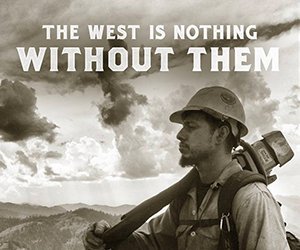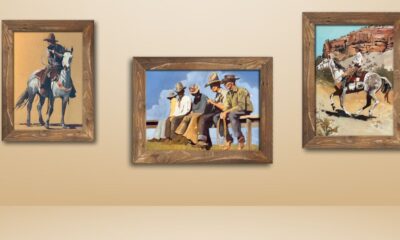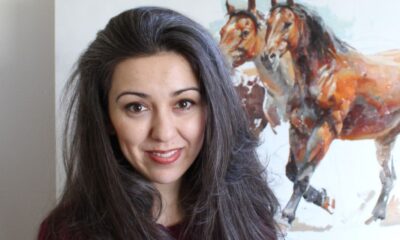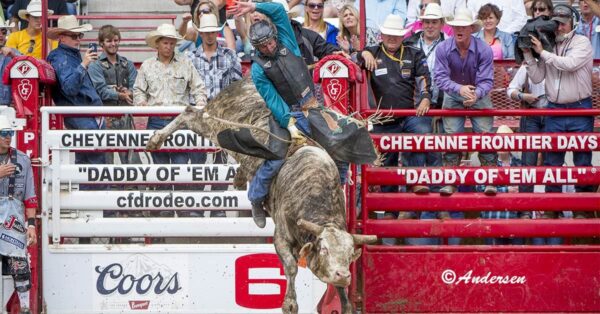From riding fenceline and bucking horses to being a master sculptor, Greg Kelsey has lived the life and tells the story of the west through his bronze sculptures.
Greg Kelsey is no stranger to the cowboy way of life and has successfully melded his love for the western way of life and art. He lives each day as it comes and tries to get the most out of it. That same intensity transpires in his Western-themed bronze sculptures, whether he’s portraying a wild bronc coming out of the chute, or cowboys during seasonal branding.
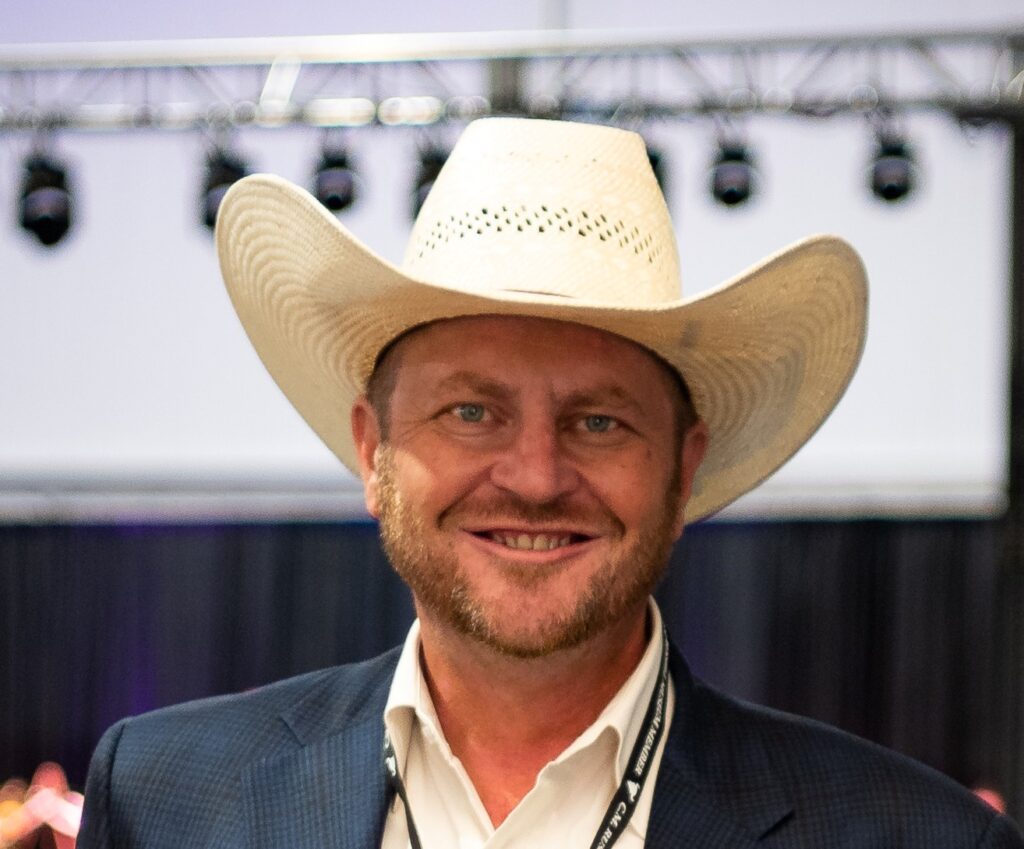
Krysta: Can you give our audience a brief introduction to yourself?
Greg: I grew up in Oklahoma and Texas. Having an art teacher mother, art was always around me. I’ve been around ranching and rodeo most of my life. My FFA advisor, David Bryson, influenced me with public speaking and entrepreneurship. I spent my fair share of time riding broncs, now I team rope to compete when I get the chance. Our son, Wilder, is still at home and we rodeo with him. We make our own horses and burned a lot of miles taking our daughter, Lauren down the road too, when she was in high school. Cowboying and art intertwine for me; always have. I applied the bronc rider/rodeo mentality to art and it served me well. I like to tackle my days and get the most out of them. That intensity shows up in everything I do – most notably in my sculpture. It’s amazing what you can do when you don’t hold yourself back.

On occasion, cowboys have to rope and brand calves with mother cows in the mix. A protective momma can have a different idea about the situation. Sometimes she’ll throw a bluff and sometimes she won’t be bluff’n at all and a wreck is born. Photo provided by Greg Kelsey.
Krysta: How did you find your way into sculpting rather than another medium?
Greg: I’d say, sculpture really found me – repeatedly. I painted and sketched my whole life with an art teacher mother. Biology/Pre-dental was my first major while working for an orthodontist in El Paso. Working in Dr. Ed Sullivan’s orthodontics lab enhanced my manual dexterity from 2D to 3D. One day while we were in his backyard he showed me a wax bust he was working on. Shortly after, I took a break from school and went to try to learn to ride broncs and found my way to Durango via rodeo. After working some ranch jobs, my art teacher mother talked me into going back to college to pursue my art degree. Sculpture class was part of the curriculum. I knew from the orthodontics job that the round felt natural. When I was able to create, a very natural feeling happened and a fast progression through the learning curve. All the two-dimensional lessons transferred quickly. A gallery gave me an opportunity to show my first piece – which was my college final – and my career took off from there. I still paint and sketch, but sculpture is what I’ve become known for.
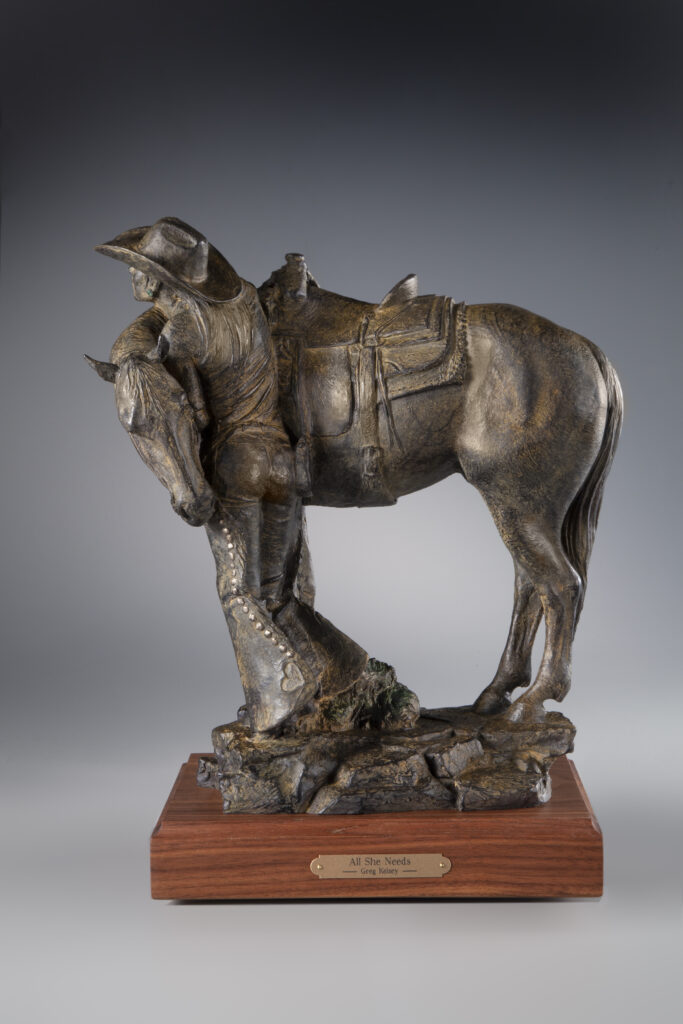
Horses are a huge part of my daily existence.I know that “The outside of a horse works magic on the inside of a person”.My kids have been raised this way – it’s something I strongly believe is worth passing on to them. My wife and I have made a lot of sacrifices to make sure of it. To see the connection is truly rewarding. Photo provided by Greg Kelsey.
Krysta: What does the process for new inspiration look like for you?
Greg: Getting on the back of a horse, that’s where I get my inspiration for art and for everyday decisions. That’s the current I try to live in. You get out of the current and all those ideas and abilities seem to pass you by. Get back in the saddle and it’s all there again.” Right outside my studio windows are my horses and the cows are out in the pasture. Inspiration is everywhere. And I’ve lived my research. Many of my pieces are first-hand experiences in cowboy living. Some artists spend money to go places for research, but I spend mine right here or in the saddle. The research expense is right outside my door. Everything I see is a possible piece of work. There are beautiful lines in everyday happenings. Ideas just flow for me, like leaves in the fall breeze. I write them all over the studio walls, in notebooks, on scrap pieces of paper, anywhere I can get the idea down.
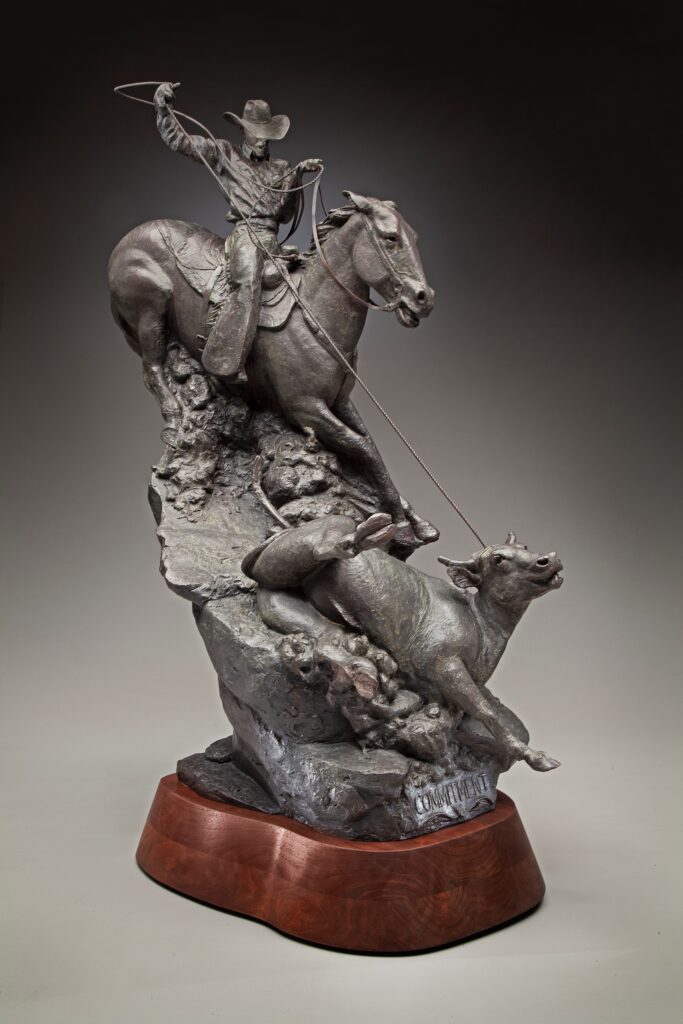
I’ve done a lot of gathering cattle off mountain permits. The terrain is rough and timbered with deadfall and brush, it is easy for them to give you the slip. We worked long and hard to gather this steer. For a while, we called him the ghost because we couldn’t figure out how he was disappearing off the ridge. We devised a plan for one of us to track him along the rim while the other blocked escape at the bottom of the broken sandstone bluff that fell to the creek. My brother-in-law is not one to let the fun part get left to another. He tracked the steer along the rim and roped him just as he was diving over the top. I had a clear view as Trav came off the ledge tied on hard and fast – totally committed. It was steep and slick, the steer lost his footing on the downed tree and went end over. It was a wreck worth documenting. Photo provided by Greg Kelsey.
Krysta: What does your creative process look like from start to finish after you’ve decided on what you will be sculpting?
Greg: I decide which idea is resonating the strongest – what just has to get out. I think about the piece in the round (3D) and work out a lot of the problems in my head. I’ll sketch a few rough thumbnails of form and shapes. I choose the scale of the piece and construct an armature and apply clay. Then I start carving the clay. To me, sculpture is a series of problems I get to overcome. I study the negative space around a piece while trying to anticipate the behavior of light on the texture of the surfaces I am creating. I’m always looking at form. Form is the most significant thing about sculpture: line, gesture, and the power or peace you create with each. Sculpture has to own its space and survive with its surroundings. It’s a powerful combination when form and subject matter are both meaningful.
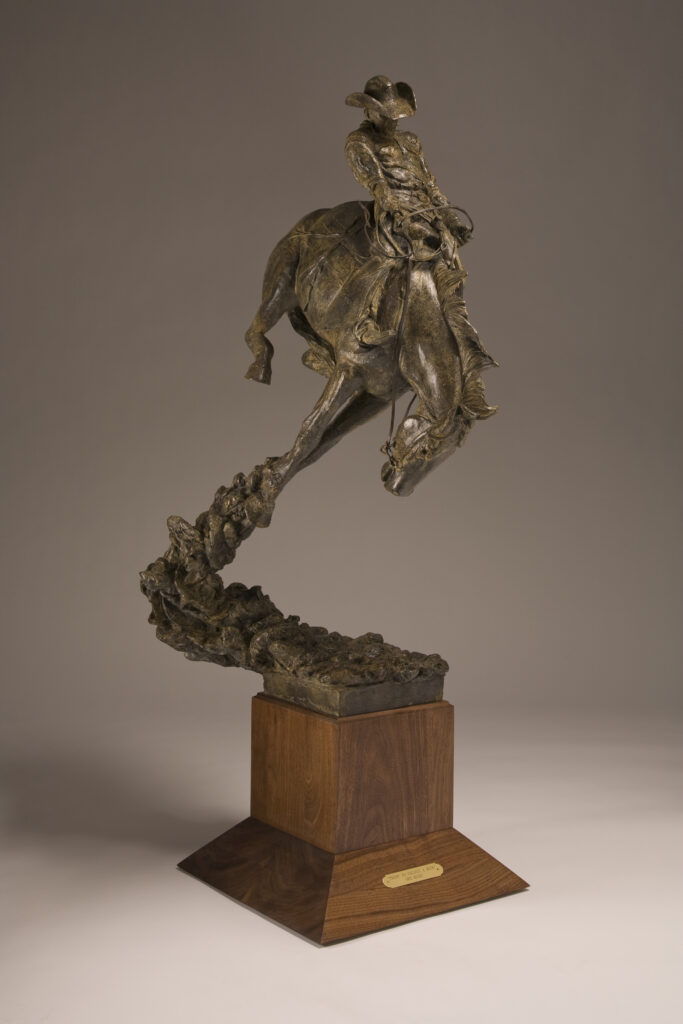
For a cowboy, it’s all in a day’s wage. They ride fence, doctor cattle, and smooth out the kinks in the buckin’ sort. It’s a matter of doin’ what they’ve been called to do and tryin’ to collect a buck along the way. Photo provided by Greg Kelsey.
Krysta: How long does each sculpture take from start to finish?
Greg: There is no getting around surface area. Big pieces take longer, but small ones are not much faster (big hands/small sculptures). Size and complexity determine the time. It could be a week to six months. Some problems can’t be worked out until you get an idea in the round. And it has to be appealing from all angles. Ideally, there are multiple pieces I am working on at one time. Often, answers to problems on one piece are answered while working on a different piece.
Krysta: What message do you hope to send with your art?
Greg: I enjoy creating pieces that require some discernment from the viewer. My subjects range from current events to historic Western. I’d like to keep western history alive through my artwork – art provokes thought in a way that nothing else does. With contemporary cowboy pieces, I want to share the nuances that only those that live it know. The story of western life is worth being told in an authentic way. I hope my work will establish and press home the historical and future significance of the cowboy lifestyle.
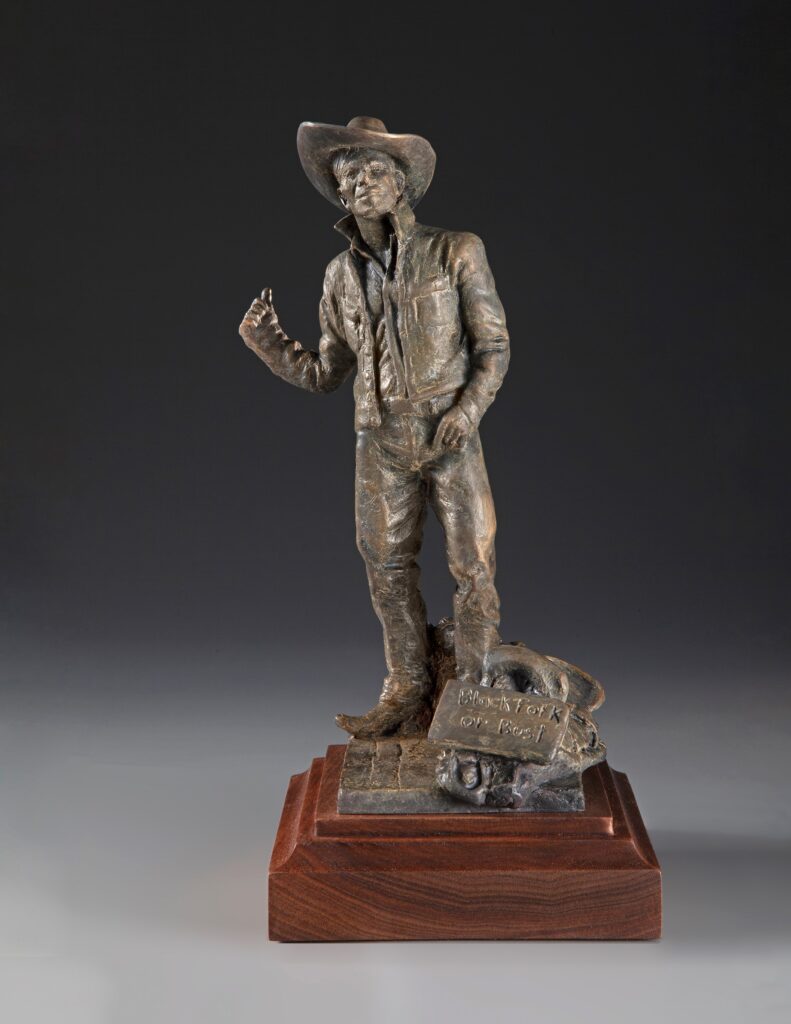
This is reflective of the rodeo culture I have been immersed in for the last 30 years plus: all the iconic places I have visited and the significant influence the rodeo road has had on my life and sculpture. In many ways, rodeo prepared me for the art world.Photo provided by Greg Kelsey.
Krysta: Each artist develops their own style, but is there an artist that you look up to or have a similar style to?
Greg: Ed Fraughton is my favorite living sculptor. He’s a deep well – a modern living renaissance genius. He taught me how important it is to master thinking about the view of sculpture all the way around.
Krysta: Do you have any closing thoughts about you or your business that you’d like our audience to know?
Greg: Mostly, I prefer to focus on my own visions, expectations, and growth. I’m always pushing myself. I want to learn what’s in me. I want to master the medium and beautiful subjects in a thought-provoking way. And bring it across to others with a unique perspective – a cowboy’s perspective. It is what I am meant to do. It’s about being part of something bigger than yourself. It’s about telling the story of western life.
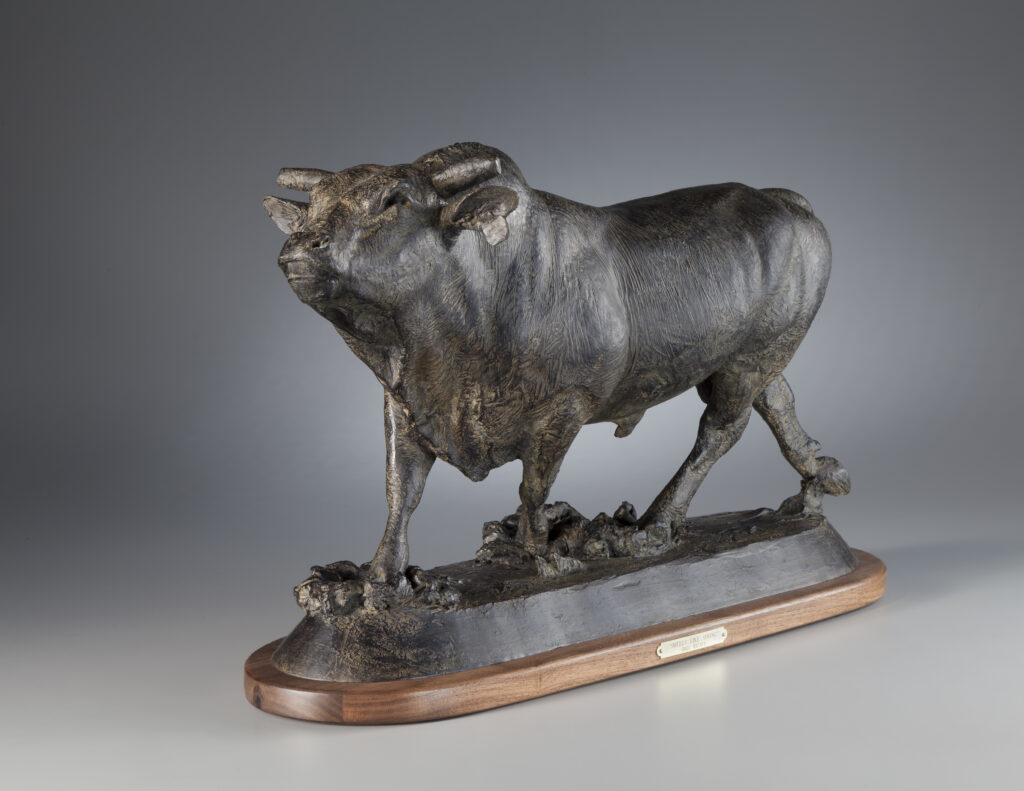
Every year, after calving season is over and planning begins for the next year’s calf crop, bulls are turned out with the cows. The sweet smell of spring and all it entails for the future is in the air. Photo provided by Greg Kelsey.
You can learn more about Greg Kelsey and his sculptures at GregKelsey.com or on Facebook. Greg will also be at Cowboy Christmas, booth 714, so make sure to stop by to see his work in person, you won’t be disappointed.
The cover Image is Greg’s Piece, Sundance & the Wild Bunch Hit the Union Pacific – Bronze, Limited Edition of 25
The Sundance Kid and the Wild Bunch robbed the Union Pacific Overland Flier No. 1 in the early hours of June 2, 1899 near Wilcox, Wyoming. The outlaws used a carefully orchestrated plan and dynamite – lots of dynamite. The Wilcox holdup would become one of the West’s most famous train robberies.
Cowboy Lifestyle Magazine
This article was created for the Summer Issue of the Cowboy Lifestyle Magazine which was released in early July. You can catch this article and many more by checking out the full issue. For more information on Cowboy Lifestyle Magazine, visit the website here.
Last Updated on 12/05/2022 by Krysta Paffrath
CLN Community Sponsor



